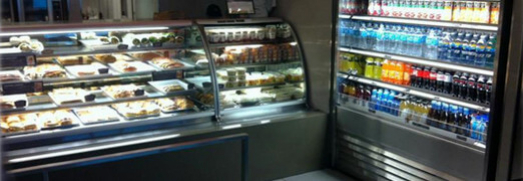Lots of refrigerator repairs could easily have been prevented or completed by the owner or even user of the equipment. These sorts of troubles are usually brought on by not knowing precisely how the equipment works. By recognizing the activity of heat most troubles might be grasped. If coolers help make items cold then why not check out the motion of cold? We can’t accomplish this due to the fact that “cold” does not exist. It is only the lack of warmth. We can never put cold within anything; we can only remove the warmth from it. So understanding the movement of heat is crucial.
Heat flows from an area of more heat to an area of less heat. This is the base of all refrigeration. If you put hot food in a fridge, the warmth will vacate it. If you lay frozen food in a fridge, heat will shift inside it triggering it to defrost. For this particular example, there is a surplus of warmth in the item to be cooled down. Let’s say the food item is room temp at 70 degrees Fahrenheit. The warmth flows within the air in the refrigerator which is 38 degrees Fahrenheit. The
evaporator coil is the component that gets cold in the box. It is usually 10 degrees chillier than the air in the box. So the heat flows from the air right into the refrigerant (freon) in the coil. The purpose of the fan is to keep the air shifting over the coil so the warmth will come into contact with it. The compressor raises the pressure and temperature level of the refrigerant so the warmth can stay moving. The temperature level of the refrigerant is normally 20 degrees higher than the surrounding air. The heat flows out of the condenser coils and right into the air. This is the warmth you can easily feel coming off of refrigeration coils. It is the warmth from the heat extracted from inside the box and also a bit extra brought in due to the task of the compressor. The heat may be followed through the air conditioning unit in the same way. It is taken in via the evaporator in the air handler. It journeys by means of the refrigerant and is turned down by the condenser coils in the external unit. Central air conditioning is a form of high-temperature refrigeration. The demand for refrigerator
repairs arises whenever the action of heat is interfered with. Then the box is way too warm.
A bad evaporator fan motor, dirty evaporator coils or even an overfilled box keep the warmth from reaching the evaporator coils. A leak suggests there is insufficient refrigerant to transport the heat. A poor compressor or thermostat suggests the refrigerant is not moved throughout the circuit. An unclean condenser or bad condenser fan motor prevents enough air from circulating to take in the warmth. Since heat streams from locations of more to much less, hot surrounding air makes it more challenging for the warmth to flow throughout it. That is exactly why your air conditioning unit works better on moderate days that on very hot ones. By working out where the heat is having a problem circulating, you generally have discovered the trouble. Refrigerator repairs are much easier with this perspective. The next step is to know what the unit is expected to be performing.

